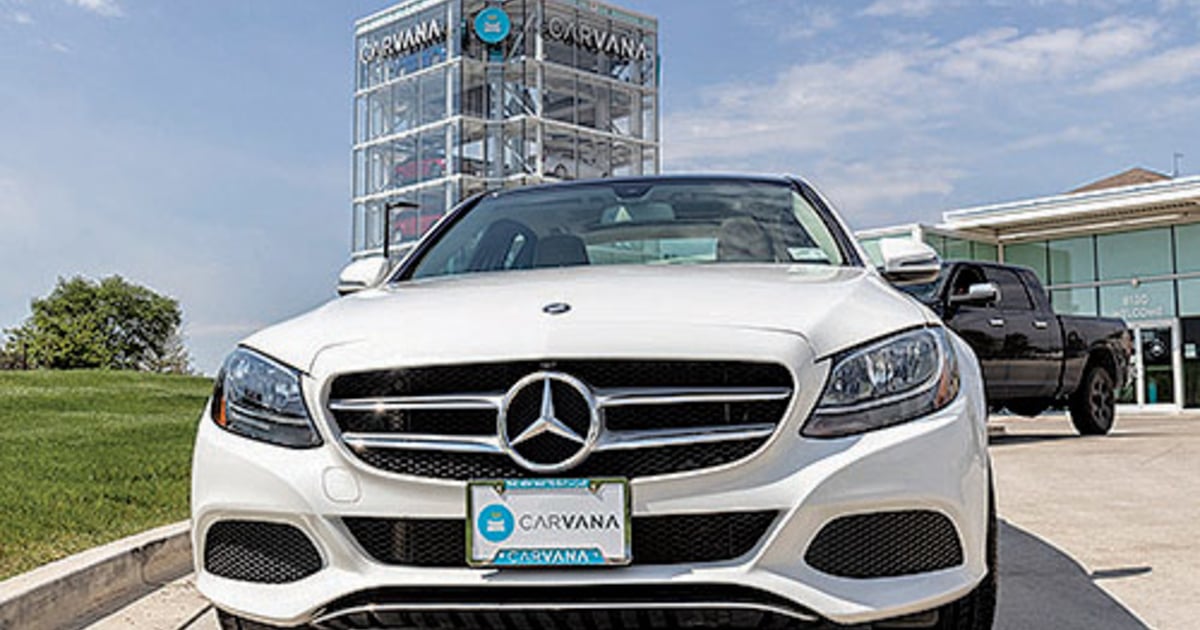
Carvana Co. said Thursday it recorded a net loss of $508 million in the quarter ending Sept. 30, noting it continues to grapple with inflationary pressures and rising interest rates that are causing consumer demand for used vehicles to wane.
The loss is larger than both Carvana’s $506 million first-quarter loss and the $68 million loss it posted for the same period a year ago. The Tempe, Ariz.-based company said high used-vehicle prices and rising interest rates, in particular, led to softening demand as consumers zeroed in on affordability. The online used-car giant also said the current interest rate environment forced lower sales conversion rates and fewer profits per vehicle sold, resulting in fewer profitable sales.
Carvana generated revenue of $3.4 billion for the quarter, down 3 percent compared with the same period a year ago. The retailer sold 102,570 cars and trucks in the third quarter, down 8 percent. The profit it made per vehicle retailed fell to $3,500 — down $1,172 from $4,672 in third-quarter 2021.
In a letter to shareholders, Carvana CEO Ernie Garcia and CFO Mark Jenkins said the company made some of the “most significant operational progress” it has ever made, but that “the increasingly challenging environment presented headwinds that inhibited that progress, allowing only a portion to show in our financial results.”
That environment, the executives wrote, “has continued to get increasingly difficult since the end of the quarter and it is probable things will continue to get more difficult before they get easier.”
Carvana has faced several challenges in 2022, including mounting losses of $945 million through the first half. With that additional $508 million third-quarter loss, Carvana’s losses through the first nine months of the year total $1.45 billion. By contrast, it recorded a net loss of $105 million through the first nine months of 2021.
The company’s stock price has fallen by more than 95 percent since August 2021, when it posted its first and so far only net profit in its time as a public company. Carvana has been at the center of multiple regulatory actions by state and local licensing agencies. And, like other retailers dealing with sinking consumer confidence and higher operating costs in 2022, it has not escaped job cuts. In May, the company said it would dismiss 2,500 employees, or about 12 percent of its work force, and that top executives would forgo their salaries for the rest of the year.
Carvana also has been busy combining its operations with those of ADESA U.S., the large physical auction network it acquired May 9 from wholesale auctions company KAR Global. The $2.2 billion deal with KAR altered the wholesale auctions landscape, giving Carvana access to 56 physical sites and additional reconditioning prowess while putting it within reach of more U.S. customers. Carvana reported seeing the first returns from that acquisition in the second quarter.
Cost-cutting
Carvana is “seeking to rapidly decrease expenses” and optimize its operations for vehicle volume flexibility to adjust to fluctuations in vehicle sales, according to its shareholder letter.
“There are three key headwinds that we’re facing right now: industry-level demand, interest rate increases and vehicle price depreciation,” Carvana CEO Ernie Garcia told investors and analysts during the company’s third-quarter earnings call.
Carvana reduced its expenses by $90 million quarter-over-quarter, Garcia said. That’s excluding the impacts of consolidating a full quarter of ADESA U.S.-related expenses, according to the shareholder letter.
The company undertook a number of measures to drive profitability and increase efficiency in the third quarter, according to the shareholder letter. It cut the money it spent on advertising by 11 percent quarter-over-quarter. It also reduced inventory on its website by 10 percent quarter-over-quarter, with further reduction expected in the fourth quarter, the letter said.
The company is also testing or has already established initiatives aimed at increasing sales profitability, including requiring vehicle payments at the time a customer places their order instead of at delivery, incentivizing pickups and drop-offs at its vending machine-like locations and “continuing inventory visibility metering on long-distance inventory,” the letter said.
ADESA U.S. integration
Carvana has embedded market hubs at 38 ADESA U.S. locations, up from 18 in August, according to the shareholder letter. It also indicated Carvana has started to put at ADESA sites more than 70 percent of the vehicles that it plans to sell wholesale. That’s up from more than 50 percent in August, the letter said.
Infrastructure
The company launched one of its vending machine-like towers in Phoenix in the third quarter, according to the shareholder letter. It also added a new inspection and reconditioning center near Richmond, Va.
Shares in Carvana slipped 7.7 percent to $13.25 in aftermarket trading Thursday.